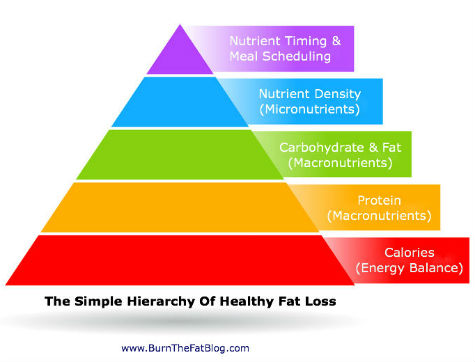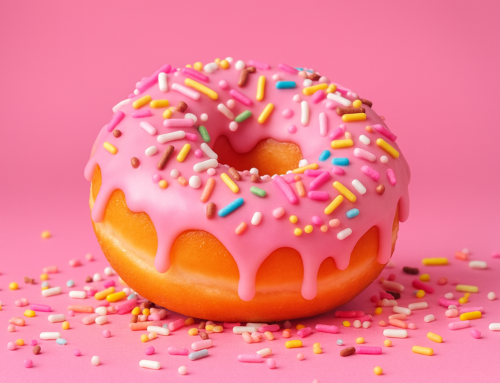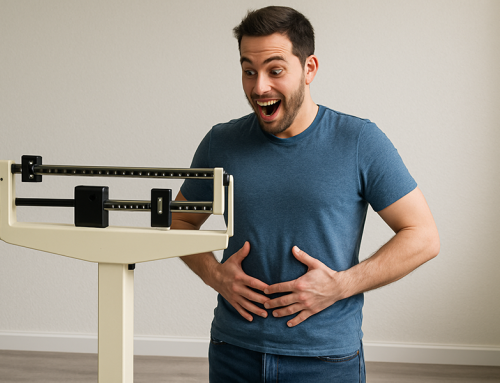Setting priorities is a valuable concept that has been around for a long time in many forms (including the famous 80-20 rule or Pareto Principle). Taking several priorities and putting them in order is known as creating a “hierarchy,” which is often shown graphically in the form of a pyramid. I first read about the hierarchy of fat loss over a decade ago, and lately there’s been a big resurgence of interest in the topic. Both coaches and athletes alike are keenly interested because so many people are still confused and overwhelmed about nutrition and failing to get results.

Having a hierarchy of fat loss removes the confusion and answers two key questions:
1. What are the most important strategies and steps to take first to succeed at fat loss – what are the “vital few?”
2. What ideas and tactics are the minutia – the “trivial many?”
Each coach may have his own version of the fat loss pyramid, but if it’s built on science and logic, you’ll see they all look fairly similar, especially the number one item at the base.
So if this has been done before, then why I am doing yet another? I wanted to create the definitive nutrition hierarchy of fat loss. I found that many of the old ones focused only on training, or they mixed training and nutrition together. Others tried to mix fat loss, muscle gain or performance goals together. Some covered nutrition but included things I don’t think belong on a priority list, or they were missing something, even if it was just a full explanation for the rationale behind it.
One of the most glaring omissions I’ve seen is the lack of emphasis on health. Lately, there’s been too much emphasis on “macros” and not enough on the health value of food. And while flexibility in food choices is important for adherence, that concept is also taken too far, with excessive focus only on calories and not enough on where those calories come from.
I also believe that most fat loss programs today, even ones that identify the right priorities, are not still simple enough. Fat loss is not easy – it’s hard to achieve and harder to sustain – but it is simple. We’ve got to simplify everything, and move away from complicated plans and convoluted theories (which are often one part marketing, one part eccentric guru).
Simplifying – and getting more results with less stress – starts with setting priorities, or as Stephen Covey wrote, “Putting first things first.” After you’ve made the main thing the main thing, only then move on to number two, and number three and so on. That’s what we mean by hierarchy: Set priorities, put them in order and be sure the vital few pieces are in place before worrying about the trivial many.
You’ll find that this hierarchy covers all the bases: it’s simple, flexible and includes health in the equation. So with that preface complete, here is my take on the Hierarchy of Healthy Fat Loss – Made Simple:
1. Calories (energy balance)
You can apply this hierarchy to Burn The Fat, Feed the Muscle or almost any fat loss nutrition program you choose to follow, with the exception of any philosophy that still promotes calorie denialism…
We understand that calorie calculating is not a perfect science, that tracking calories is difficult, and a calorie deficit is a moving target. Yet the fact still remains: You need to consistently maintain a calorie deficit over time to lose fat (you must achieve a negative energy balance). We also must agree that there’s more than one way to do it…
You can create a meal plan at your ideal calorie level, print it out and simply follow the plan, you can set calorie and macro goals in advance, then use a mobile app to track the food you eat meal by meal, you can simply cut back on calorie-dense foods or food groups, you can practice mindful eating and stop when you’re only 80% full, and the list goes on from there, including all kinds of “tricks” that diet gurus use to get you to eat less (ironically, sometimes in the same breath that they tell you not to count calories).
If you really think about it, almost every weight loss diet is trying to accomplish the same thing. Directly or indirectly, consciously or unconsciously, the goal is to get you to eat less. Many methods of achieving a calorie deficit can work, but I don’t believe every method is equally successful.
Intuitive eating can fail. Estimating portion sizes can fail. Low carb diets can fail. Low fat diets can fail. Clean eating can fail. Any method will fail if you don’t maintain that calorie deficit, but calorie-tracking can increase your odds of success. My number one choice is the by-the-numbers (calories and macros) daily meal plan method. Start every day already knowing what you are going to eat – the types of food as well as the amounts – because you’ve planned it in advance.
Whatever method you use to try losing fat, the bottom line is, if you don’t get your calorie balance right, you will not succeed, no matter what foods you eat, no matter what macros you eat, no matter how healthy you eat. Getting calories right is the top priority for fat loss.
The Burn the Fat ‘How Many Calories To Eat Sheet Sheet’ (free)
2. Protein (macronutrition)
The root of the word protein, translated, means “of first importance.” It may not be first on our list of priorities, but protein is first in importance among the macronutrients. I believe in the importance and value of eating carbs, (and I definitely like eating carbs!), but technically, carbs are not an essential nutrient. There are essential fatty acids, but you don’t need large quantities of fat either.
Protein is also essential, and ongoing research continues to confirm how important protein is when you’re dieting. Protein helps stop muscle loss when you’re in a calorie deficit. It also has the highest thermogenic effect and helps make you feel fuller or suppress your appetite more than any other macronutrient (and that’s on top of the muscle building benefits).
Because of the support protein lends to your fat loss efforts, it’s the highest priority macronutrient for body composition goals. That’s why you should calculate your protein needs and be sure you have your protein covered, and only then nit pick over the exact amounts of carbohydrate and fat. In fact, if you get your protein right and your calories right, you’re probably 80% of the way there toward setting up a fat loss plan that works.
How much is enough? That question will be endlessly debated, but if you’re weight training (and you should be), the popular recommendation is 1 gram per pound of body weight per day, give or take .1 to .2 g (0.8 to 1.2g per lbs of bodyweight), depending on your goals, preferences, current body fat level, and dieting status.
[If you’re not sure where to set your protein goal based on your situation or if you find it difficult to hit your protein target every day, get a coach to help you. If you’re an active member, make a post in the Burn the Fat Inner Circle forums and we will be standing by to help you. Also be sure to check out our many articles and resources on protein in the member’s area.]
How Much Protein Should You Eat? (members)
3. Carbohydrate and Fat (macronutrition)
For all the attention given to high carb diets and low carb diets (these two macros have been in the forefront of the “diet wars” for years), I have what some might consider surprising news: When it comes to fat loss, the importance of fat and carbs are both lower than calories and protein.
Some people fuss over macronutrient ratios on a meal plan spreadsheet for hours, or get in lengthy debates on forums about low carb versus high carb diets, but both are a waste of time if you are eating too many calories.
There’s no magic ratio or gram amount of either macro that makes you burn fat faster.
Lets assume you’re not one of those calorie denialist weirdos. But, you do think reducing carbs helps you lose weight better. Great. Have at it! (preferring a low carb diet doesn’t make you weird, it’s knowing your body). And if you think that cutting high fat foods and or eating a lot of plants helps you lose weight, that’s great too! Go for it!
Let me assure you that the weight of scientific evidence today says that over the long term, low carb and low fat diets both work. Go ahead and pick a side and stay in the diet war battle if you want to keep wasting time or raising your stress levels, but it’s a fact that thousands of people have succeeded using both types of diets – short term and long term. What they had in common is they achieved a calorie deficit, they consumed adequate protein and their choice of diet was based on knowing they would enjoy their plan and have no problem sticking with it long term.
Do I have ideas about what’s optimal for carb and fat intakes or recommendations for best practices? I certainly do, and you can find them throughout my articles, blog posts and in Burn The Fat, Feed the Muscle, in detail. I don’t like extremes on either end of the spectrum, but, carb and fat intake can be customized to a great degree based on your personal preference and on what works best for you.
Here’s the simple approach: Do your calorie math and do your protein math. Then fill in the rest of your calorie budget with fat and carbs in the amounts that make you happy. That’s it, you’re done (for now). Want to experiment and fine tune the macronutrient amounts? Great! You should. But not until you know priority #1 and #2 are covered.
The New Rules of Setting Your Macros
4. Nutrient density – vitamins, minerals, fiber, essential fatty acids, phytonutrients, etc (micronutrition)
Get about 90% of your calories from healthy foods that you enjoy. That’s my simple advice. If you enjoy healthy foods, if you take pride in eating nutrient-rich meals, and you’re not that into eating fast food, sugar, desserts or other treats, make it 95%. Heck, make it 99% and be a “clean eating saint” if you wish. If you enjoy being more relaxed and you’re tracking calories and macros carefully, make it 80-85%. In any case, the directive is clear and simple: eat healthy foods you enjoy the vast majority of the time.
“Healthy foods that you enjoy” is an important qualifier. One of the biggest reasons most diets fail is because they prescribe foods to eat every day that you don’t like (and take away foods you do like). You probably won’t stick with any diet long term by eating someone else’s way – even if it’s scientifically sound or it worked well for others. The more rigid the lists of allowed and banned foods, the less likely you are to stay with it. The more you make the effort to customize your nutrition based on your own tastes, the more likely you are to stay with it.
That’s the great irony of the diet industry meeting human psychology. Most people want to be a follower not a student, they want the work “done-for-them” and they want rules painted in black and white. These facts are taken advantage of by marketing experts (in fact, they are taught by marketing experts). And these are also the very desires that contribute to the failure of almost all diets that are not flexible and which “give you a fish” instead of “teaching you how to fish.”
When I put micronutrition below calories and macronutrients, I’m not suggesting you should eat anything you want as long as it fits your calories and macros. As I said before, even sincere and honest fitness professionals have jumped the shark with this “fit your macros” mantra. I’m saying, start with calories and macros, but don’t stop there.
You can lose weight by eating most of your calories from any junk food you desire, if you have a calorie deficit, but that doesn’t mean it’s optimal for body composition and it doesn’t mean it’s healthy. It surely doesn’t set a good example when you’re a fitness pro.
Health and fat loss overlap, but they are two separate subjects and people are constantly forgetting this. You can eat health foods and gain fat if you eat too many of them. You can eat unhealthy foods and lose fat if your calories are low enough. That’s why calories are at the top of the fat loss hierarchy. However, fat loss should be a healthy endeavor, and enjoying good health, energy and vitality requires attention to the quality of food you eat, and probably more so as you get older.
Once you’ve got you goal numbers set for daily calories, protein, carbs and fat, fill them in with (approximately) 90% healthy foods that you choose yourself and that you enjoy and you can be both lean and healthy – for life.
5. Meal scheduling and nutrient timing
In the past, when fitness enthusiasts thought about nutrient timing, they thought about the famous post-workout “window of opportunity” where you are supposed to eat immediately after training or risk wasting all your hard work. Not only that, nutrient timing or even the post-workout meal alone was placed at or near the top of the priority lists. Entire programs were created and books written based on nutrient timing, often claiming that optimizing the post workout meal (or meals) and or taking pre-, during- or post-workout supplements were the most important things you could to improve body composition.
Current science suggests that while nutrition after intense training is important for recovery and progress, it’s not the most important factor, especially when fat loss is the goal. Current research also suggests that the best way to look at nutrient timing is to consider the entire several-hour period from the meal before your workout, the workout itself and the period after the workout. It also suggests that the post-workout “window” lasts longer than most people used to believe, especially if you ate before training.
I also like to include the scheduling and number of daily meals in the nutrient timing discussion. It has been interesting (comedic at times), watching the arguments back and forth over the years.
You have one camp that swears that breakfast is the most important meal of the day, and another that says you should skip breakfast and eat most of your calories at night. You have dieters who believe carbs are okay, but they should only be eaten in the morning, and you have others who say carbs should be eaten at night and be avoided in the morning (meat and nuts are ok though, so is buttered, oily coffee). Guess what? These types of “nutrient timing” fads are either complete nonsense, or there is validity on some level, but it’s minutia compared the higher priorities.
And then we have the infamous meal frequency discussion. On one hand we have the guys in my sport – bodybuilding – who still say that 5-6 meals a day is optimal (at least 4, for smaller guys), you have the middle ground people who claim 3 meals or 3 meals plus snacks is most practical and works just fine. You even have people that tell you meal frequency doesn’t matter. “Eat 1 or 2 times a day and the results will be the same,” they claim.
Who is right? Well, those who say meal frequency or nutrient timing “don’t matter at all” are mistaken and clearly not understanding the concept of fat loss hierarchies. Nutrient timing matters. Our understanding of it has simply evolved so we now know where it fits on the list of priorities. It’s on the list, but when you eat or when you eat specific macros is the least important factor.
If you eat too many calories, it doesn’t’ matter how many meals you had, you’re going to gain fat. In fact, if you eat many meals and that high meal frequency leads to excess calories consumed – you get fat. If you eat too few meals, and the long gaps in between make you ravenously hungry and you binge and overcompensate with excess calories later – you get fat. And, if you eat too many calories, it doesn’t matter how perfect your pre-, peri-, and post-workout nutrition is, you’re getting fat.
Furthermore, just like the dietary fat and carbs debate, there’s no single best way to schedule your daily meal plan – this is a highly unique and personal choice for each individual. Your daily meal plan should be based on your goals, your personal preferences and your willingness and ability to follow the plan for the long term.
Who are you and what are your goals? Are you a large male bodybuilder in hard training, trying to gain muscle mass? If so, then a higher meal frequency – aka classic bodybuilding meal plan – makes perfect sense, and is almost necessary, for practical reasons alone. Are you a small-framed female, lightly or moderately active and trying to lose weight? If so, then it might make more sense to eat fewer meals.
Your meal schedule should be customized and it should be your choice, it should not be dictated by rigid program guidelines from any guru or diet book. Nothing is worse than cookie-cutter meal plans. Please, do not jump on bandwagons here, make the decision for yourself, or choose coaches who teach a structured, yet flexible approach, and don’t be afraid to experiment a little.
One thing I encourage everyone to do is daily meal planning. Motivational speaker Jim Rohn once said , “Don’t start your day until you’ve finished it.” What he meant was, don’t wing it. Go into your day knowing exactly what you’ll eat and when you will eat it because you have a daily meal plan on paper. Research does not say there’s one ideal meal frequency. But research does say that an inconsistent or haphazard meal pattern is inferior to a scheduled and consistent one – for both health and fat loss. In addition, having a regular meal plan schedule taps into the power of habit, and the longer you do something, the easier it gets to do.
Bottom line: Nutrient timing does belong on the priority list, but getting your calories, macros and healthy food choices in order are all higher in importance.
Is the post workout protein shake mandatory? (members)
How Many Times a Day Should You Eat? Meal frequency revisited (members)
What about supplements?
Some people could argue that the evidence-based use of supplements should be on the list, though granted, most of those people are selling them. Nearly everyone agrees supplements are the item of lowest importance. I’ve chosen to leave them out completely because I consider my list a hierarchy of priorities, and I don’t see supplements as a priority at all – especially when we are talking about fat loss.
Out of all the supplements on the market, the so-called fat burners have the worst track record, the most scams, and the fewest evidence-based products than any other supplement category. Generally speaking, “fat burner supplements” either don’t work, or the benefit is so small it’s not even worth mentioning. On rare occasion, products have emerged that did work, but there were side effects or safety questions.
For competitive bodybuilders or athletes where the slightest edge makes a difference, certain types of supplements might help with workout performance, recovery and so on. You also have protein powders which could help you hit your (very important) protein goal. But supplements are simply not a priority for the average health and fitness enthusiast in the overall scheme of things. Supplements are known in the tradition of the Pareto Principle as one of the “trivial many.”
That’s a wrap!
Whether you’re a total beginner or you’re a veteran who is still confused about how to create a daily meal plan, you need to simplify and prioritize, and using the hierarchy of healthy fat loss is a great way to do it. Using this hierarchy is also a terrific way to troubleshoot fat loss plateaus. It’s a valuable tool for everyone.
Please like and share and if you have any questions or comments, feel free to post them below.
Train hard and expect success,
Tom Venuto,
Founder, Burn the Fat Inner Circle
Author, Burn the Fat, Feed the Muscle (BFFM)
Author, The BFFM Guide To Flexible Dieting
Author, The BFFM Guide to Building Muscle With Progressive Overload Training






I know people who have lost an impressive amount of weight eating simply cutting back on the fast food and junk food that they eat and drink. I also know individuals who have lost weight using diet supplements. If the most important thing to those people is to simply get skinnier, and if and their idea of happiness is simply to see the number on the scale drop, I am perfectly capable of respecting their belief even though I know that ~ the higher key of nutrition~ has the power to ~strengthen their body metabolically, physically, psychologically and even spiritually ~ in a manner and to a degree that simply cutting back on calories, starving themselves or polluting their blood streams with diet drinks and diet pills never will. I will always prefer the fun of re-shaping and strengthening myself :)
great article but have a question; I have been told by other fat loss gurus that you can eat as much fat as you want (no calorie counting) as long as you don’t have any carbs and still lose weight. Is this true?
Nick,
Just by reading this article you will have your question answered.
Nick, that is absolutely blatantly false. Eat too much of anything (eat a surplus) and you will get fat. There are still “experts” in the low carb community who surprisingly keep spreading this myth that if you cut carbs you can eat as much fat as you want. If you remove carbs, which can be calorie dense foods, especially sugars and starches, its simply another method of calorie control so many people automatically tend to eat less while on low carb so they may lose weight without counting calories – but they are losing fat because they are in a calorie deficit. They reduced carb calories. Beware of “gurus” who say things like that or who deny that weight loss is about calories. The article by Mike Howard that I linked to is relevant and may illuminate this further: https://www.burnthefatblog.com/calorie-denialism.php
Awesome information as always Tom. Becoming a bigger fan by the day :) “Burn the fat feed the muscle,” has become my go to book. Your attitude and information are the opposite of gimmicks and gurus. Thanks for keeping it real. You have helped me take my fitness journey to the next level and as I read and reread your information I implement more and more of it into my life. I tell people Tom is da bomb diggity. Haha! But I sincerely mean it.
Kristen
Great article.
I’ve found it helpful to describe food or nutrients as ” information”. Many have not heard it that way so I think it’s a pattern interrupt. We speak to what kind of information does a cell need for optimizing health and whether the amount changes depending on metabolic needs (age, pregnancy, activity, etc) . Offering it up a yet another suggestion for how we fuel ourselves.
Hello! Thanks so much for the pyramid illustration! It sure makes sense and shows so clearly in a nutshell just how priority works in choices with weight loss and body fat considerations. Thanks for all your hard work in helping us understand the truth about weight loss and fitness!
such a terrific read! you had my attention throughout the entire article. well done!
Tom I’ve been doing the TN28 workout and have a question about supersets 0 rest. What is the second exercise to superset with? B.B. Tricep extension 0 rest but there isn’t a second exercise. Is this a drop set of 3 sets in a row?
Thanks,
G
Hi Giusuppe. Hmmm. Im not sure if there is a typo on a web page somewhere, but in the book the supersets are listed as tricep – bicep supersets. for example lying tricep exstension (no rest) straight to barbell curls (then 1 or 2 minutes rest)… or tircep pushdowns (no rest) straight to incline dumbbell curls (then 1 or 2 min rest). then repeat for a total of 3 supersets
Thanks for getting Back with me appreciate it.
That’s what I figured I’ve been doing the super-sets like that.
Actually it was from the workout in the book, “Burn the Fat….
I could use some help with the Endo-Mesomorph eating plan. 50% Meso/50% Endo. I have qualities of both body types according to
http://www.bodybuilding.com/fun/becker3-results.html
Not sure how accurate the calculator is but it seems right based on a few research articles I read. The new research indicates we are usually a blend of either endo/meso or ecto/meso.
Thanks my friend,
G